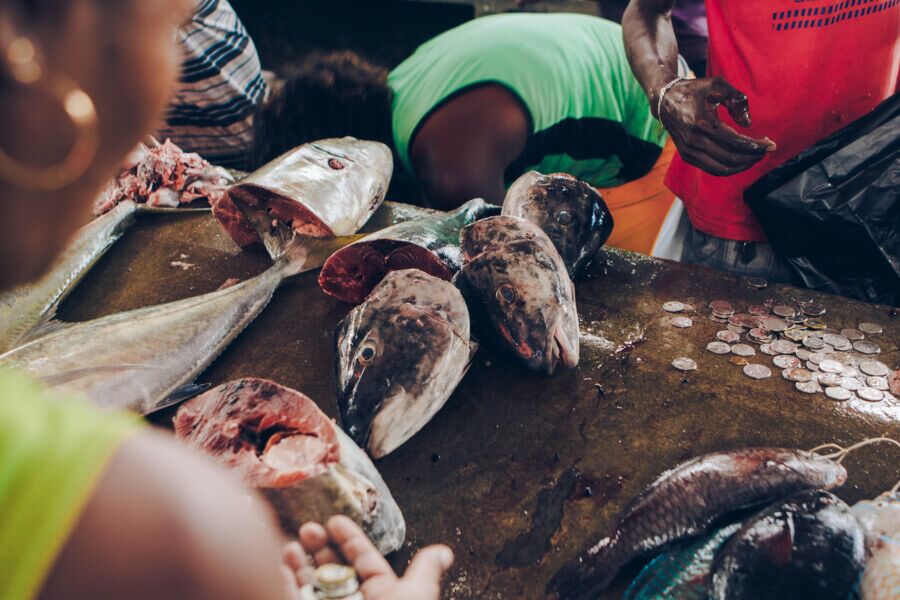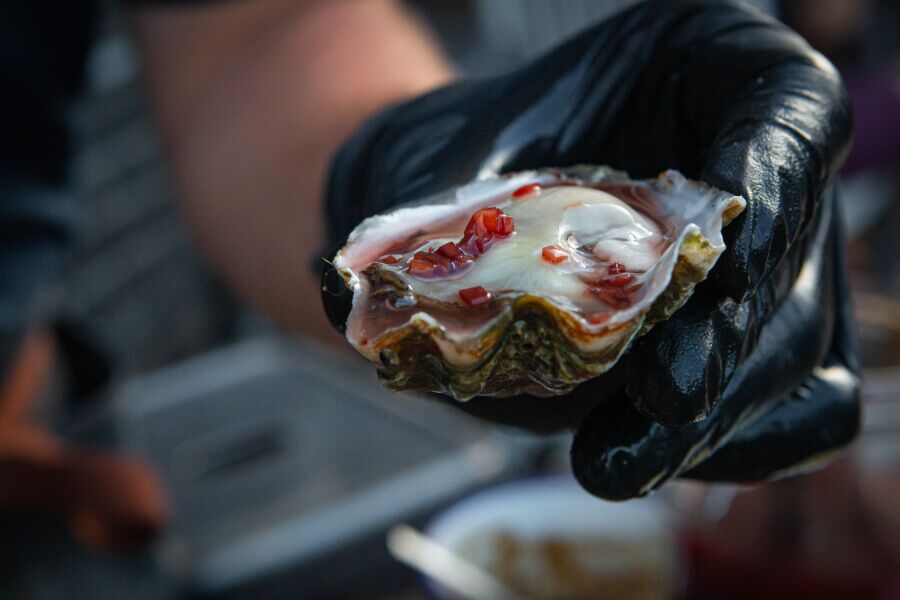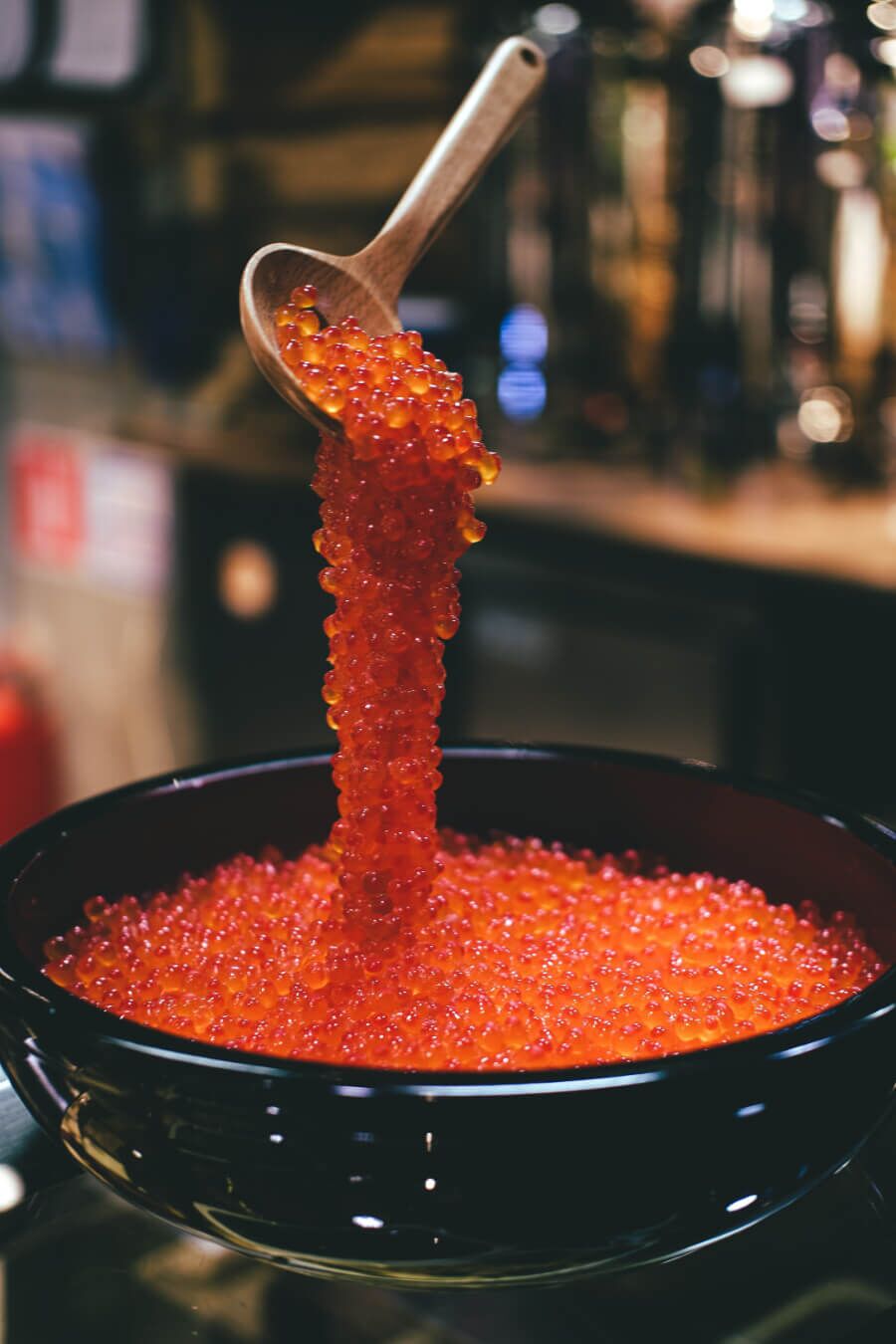Food to Freak you out!
Spicy Adventures
Your cart is empty.
SUBTOTAL
£0.00

Spicy Adventures
Imagine eating a beating cobra heart, bird’s saliva, fish eyes, animal testicles or bull’s semen! From the mildly distasteful to the truly repugnant, bizarre foods have, in some cases for thousands of years, been part of someone’s diet. The mind boggles!
Our fascination with ingesting ‘weird’ foods was highlighted in the 1980’s when the tv programme ‘Clive James on Television’ made fun of some of the crazy exploits aired in the Japanese game show ‘Endurance‘. Video clips showing contestants eating anything from live insects to kangaroo penis were deemed not just eccentric but nauseating and repugnant. This programme, however, paved the way for the current reality show ‘I’m a celebrity, get me out of here!’ and its ‘Bushtucker Trials‘. In these, famous contestants are prepared to endure unspeakable horrors, including eating what most of us would consider gross, repulsive foods, in the name of entertainment. Pig’s anus, wriggly witchetty grubs, crocodile vagina and deer’s blood have all featured. Yum, yum!!
Very few living creatures have been exempt from the human food chain. A large number of mammals, reptiles, amphibians, birds, fish and invertebrates have at some time been consumed by man. Dead or alive, cooked or raw, in part or whole, solid or liquid, fresh or preserved – everything, it seems, is up for grabs. Little potential food has escaped attention in terms of dietary needs or, indeed, fads. Whole, live insects have long been documented as part of various cultures’ sustainability. The almost completely formed fetal duck or chicken is ‘enjoyed’ straight from the shell. In some cultures drinking blood is taboo – in others it is an acceptable dietary supplement.

We can be repelled by the look, taste, smell and texture of food stuffs with which we are not familiar. We are creatures of habit. What’s more, anything that can be identified with parts of our own bodies can make us feel particularly squeamish. We may be concerned about safety. Is it poisonous? A respect for, and a sentimental connection with, living creatures exists that is not normally the case with any other food source. ‘Gut reactions’ are based very much on emotion not reason. A natural sense of revulsion kicks in when considering eating a newborn’s placenta, Sweden’s fermented raw herring, warthog anus (Namibia) or jellyfish (Japan). Total, utter repugnance overwhelms us at the barbaric idea of eating live monkey brain (China).
Feelings of distaste or disgust are universal (we all have those ‘marmite’ moments!) but what repels us can vary enormously from culture to culture. Putting to one side any inhumane aspects of procurement and devourment, repugnance itself need not mean there is any inherent problem with an unusual choice off foodstuff. It is simply different.
Ingesting bizarre foods would, of course, have originally fulfilled the basic human instinct for survival. In times of starvation when ‘normal’ provisions are not available, any potential nourishment would be sought, tested and exploited in order to prolong life. Hunger is a great motivator! Snakes, worms, slugs, beetles, rodents, even raw seagulls and turtles have been consumed in a ‘life or death’ situation. Dogs and cats were eaten in Italy during wartime: monkeys were a ‘poverty’ food in the Philippines. With the stigma of some of these ‘life savers’ they never became general fare but some, for example, Cambodian tarantulas, are now sought after delicacies. Dehydration, when conventional ‘thirst quenchers’ were unavailable, has led to drinking one’s own urine – or anyone else’s for that matter! (Although controversial in normal times, there still remains a belief in urine’s health-giving properties.)
It makes sense that, having secured a potential foodstuff, hunger would necessitate making the most of every palatable part of it. Squeamishness would not be a deterrent. Why eat some parts of a particular source of nourishment and throw the rest away? As a result many unusual dishes have become accepted, even sought after and consumed globally today. Chickens’ feet are eaten around the world: in the UK brawn is made out of pigs’ and sheep heads: pigs’ trotters are especially popular in France: all parts of any reproductive tract are acceptable in many parts of Asia.

“Necessity is the mother of invention” (Plato c. 428 – 348 BC). To maintain supplies in times of famine it was necessary to develop ways of safely preserving food at a time of glut. Drying in the sun, freezing in ice, salting, smoking and fermenting were effective methods which sometimes even enhanced health-giving properties. However, many of these processes not only changed the look and texture of surplus supplies but also their smell and taste making them far less palatable. Stinkheads – fermented salmon heads (Alaska), shiokara – seafood fermented in fish gut (Japan) and virgin boy eggs – eggs cooked in young boys’ urine (China) all come to mind (but not happily!).
There are complex historical cultural factors that influence behaviour. The ‘trial and error’ process of adapting to different environments and climates presents many opportunities and challenges. Knowledge and skills are acquired. Unique values and beliefs become entrenched and are passed down from generation to generation.
“One man’s meat is another man’s poison” Thomas Whythorne (c.1576)
It is difficult to believe that pleasure in the taste, not to mention the aesthetics of many ‘gross’ foods, is genuine. Most of us react negatively to bitter tastes which could, of course, be nature’s way of warning us that a particular food is poisonous. On the other hand, most sweet items easily tempt us. So what makes some of the incredibly offensive smells and tastes of certain animal-based dishes so appealing that we are able to by-pass our natural sensitivities?
“An acquired taste is an appreciation for something unlikely to be enjoyed by a person who has not had substantial exposure to it. It is the opposite of innate taste, which is the appreciation for things that are enjoyable by most persons without prior exposure to them” (Wikipedia)
Can we simply learn to love it? ‘Weird’ foodstuffs often have a special significance that makes them part of a particular culture’s identity and therefore attractive. Extensive experience or exposure (possibly out of necessity) can render any ‘strange’ food ‘normal’ and hence enjoyable. As a shared tradition it can help reinforce the cohesion and solidarity of a society engendering feelings of comfort and security. ‘Special’ dishes unique to a particular society can be nostalgic reminders of home. Today, as the world ‘shrinks’, unusual dishes continue to ‘migrate’, tastes adapt and diets evolve.
Experimentation and the discovery of different ways of processing food have led to various curious, though possibly more acceptable offerings. The S. African mopane worms are dried or smoked fat worms which are rehydrated and cooked – the chapulines of Mexico are fried grasshoppers, jibachi senbei (Japan) are boiled, dried wasps in a biscuit and from the excrement of civets fed on coffee beans comes highly-prized coffee (Indonesia).

There are powerful, historical beliefs in the health-giving properties of some very strange foods. Not all may stand up to scrutiny but many unique traditional lifestyles are based on such judgements. Some that might bear examination from a nutritional point of view are tuna eyeballs with their unsaturated fatty acids believed to promote healthy brain cells, oysters considered good for the immunity and liver as supporting a number of bodily functions. Do the positives outweigh the negatives?
Many bizarre foodstuffs have been, and still are, highly prized for their so-called libido enhancing properties. The rhino horn has long been regarded as an aphrodisiac but is only one of many strange foodstuffs with erotic connotations. The bull or tiger penis, sperm whales’ vomit, cobra blood and leaf cutter ants are but a few exotic items thought to have sexually stimulating properties. The cruel exploitation of living creatures and the possible extinction of species can never be justified especially where practices that essentially rely on the placebo effect are concerned.
That which is rare, difficult to procure or unusual is generally very expensive. Food is no exception. Historically one way in which the wealthy minority would flaunt their riches would be through their ability to entertain with lavish feasts or to make gifts of highly prized delicacies. ‘Gruesome’ dishes offered purely to impress and demonstrate position in society would become fashionable. Today, eating genuine caviar (sturgeon’s roe) would still be regarded as an example of affluence, sophistication and status despite the fact that many might find it distasteful.
It is not entirely unheard of for chefs around the globe to rekindle an interest in some gross, historical foodstuff purely for entertainment. Appealing to the tourist trade, a dish will be ‘resurrected’ that may have been relevant in the past but is no longer generally eaten. Locals relish seeing visitors squirm when they are persuaded to sample some revolting, traditional ‘horror’. Fermented, Icelandic shark comes immediately to mind. Its main purpose today is that of raising a smile!
Challenge yourself at the Disgusting Food Museum, Malmo, Sweden – if you dare!
Our island nation is not entirely immune from the joys of eating what many would regard as revolting ‘delicacies’. In many cases the origins of dishes are well disguised before they come to the table. We may not always pick up on what we are actually consuming.
Offal – liver, kidney, heart, brains, tongue, lungs, intestines (eg chitterlings – the large intestines of a hog), tripe (stomach lining of a cow, pig or sheep), sweetbreads (thymus and pancreas glands of young calf and lamb) – is frequently served up in the UK despite a lingering perception amongst the ‘natives’ that it is repulsive. (The fact that sausage – one of the nation’s favourites – is often encased in animal intestine may well be overlooked!)
Pigs’ trotters and brawn (a dish made from the flesh of a pig’s head) have been popular throughout the centuries and, as with any offal, are not only tasty but great economical dishes.
Haggis. This celebratory dish of the Scots is a concoction of lambs’ heart, lungs liver, onions and oatmeal made extra palatable by the addition of spices such as cayenne pepper, nutmeg, coriander and mace.
Black pudding. Originating in the British Isles this ‘delicacy’ consists mainly of pigs’ blood together with onion, oats and barley flavoured with a combination of herbs and spices including marjoram, ground allspice, coriander, mace, mint and thyme.
Cockles, mussels, clams, scallops, shrimps, prawns, crabs, lobsters, langoustine, squid and octopus represent many of our favourite seafoods. However they are not for everyone. They often fail to be aesthetically pleasing, may be chewy and slimy and generally off-putting. For many, though, they are a healthy dietary addition and a great delight.

Cod and herring roe has long been available and eaten in Britain. Hard roe is the unfertilised eggs of the female fish and soft roe (milt) is the male semen. Possibly not the first item on anyone’s shopping list (jellied eels included!) but it does go to show that maybe we can be as offbeat or eccentric in our tastes as those, for example, with a liking for ambergris produced in the stomach of a sperm whale…
Dried young gannet chicks are still regarded as a delicacy in the Outer Hebrides despite their offensive pungency. Attempts at making the practice illegal have so far failed.
“Variety’s the Spice of Life. That gives it all its flavour” (William Cowper 1731 – 1800)
Would we extend this sentiment to all aspects of life? Maybe not! ‘Disgusting’ foods are certainly many and various and undoubtedly full of flavour (?!). Their descriptions are often stomach churning at best and grotesquely horrifying at worst. No words could probably do justice to our reactions were we to experience them ‘in the flesh’! But are we ‘missing a trick’? Could some of the benefits of indulging in ‘disgusting’ delicacies outweigh our negative sensibilities? Should we be distinguishing between barbarity and sheer squeamishness?
Sweet Dreams!!
Read more about Bizarre foods:
The Story of Bau Nyale
Are Frogs Legs really French?
Guinea Pigs – Pets or Food?
The Annual Cheese Rolling Festival

Understanding Spices
Spices have long been integral to the UK's culinary landscape, adding depth, flavours, and richness to a myriad of dishes. From the pungent aroma of cumin in Indian curries to...
Read MoreUnderstanding Spices
Confetti is an essential part of any wedding day. Not only is it a wonderful way to greet a newlywed couple, but it also provides some beautiful photo opportunities. The...
Read MoreSeasonal Ideas
It’s no secret that any handmade gift will always be more special than a store-bought one. Homemade food gifts are especially wonderful, a labour of love that shows someone you...
Read MoreHealth and Wellbeing
It’s no secret that winter’s cold and gloomy weather makes us crave indulgent dishes like fondue and baked goods like sticky toffee pudding and apple crumble. While Christmas is the...
Read More